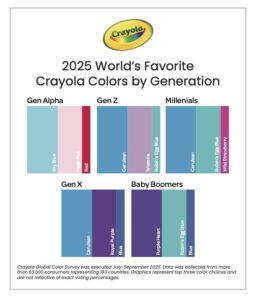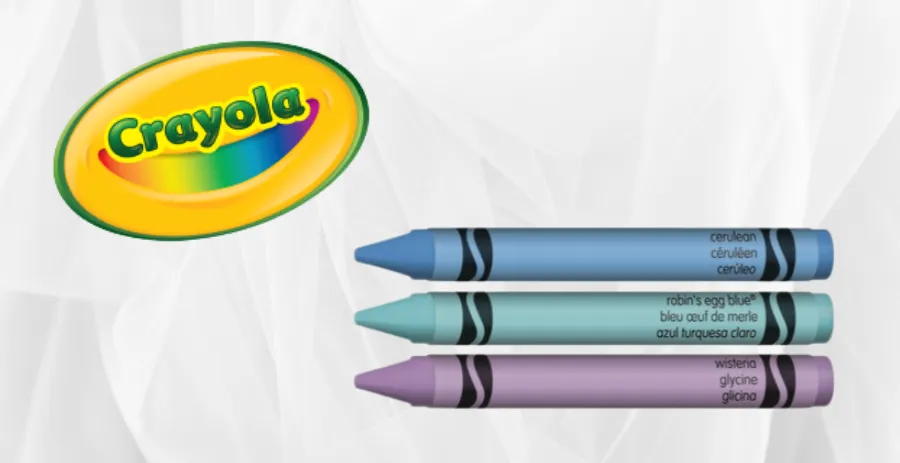The results of a global survey show that consumers are gravitating towards calming shades of blue.
After voting from more than 180 countries, Crayola has identified the three most popular colors from its extensive palette – and the results show that everyone has the shade of blue.
The announcement comes on National Color Day and shows that “we share a common connection with certain hues,” according to Crayola's press release. The three most popular Crayola colors worldwide are Cerulean, Robin's Egg Blue and Wisteria.
“This year, Crayola celebrates creativity through color and the deeply personal role it plays in connecting us to the past and inspiring us anew,” said Victoria Lozano, Crayola’s chief marketing officer. “Color is an essential part of who we are and how we see the world. It has the power to connect us across cultures, generations and emotions. And it opens up our creative possibilities. It's always exciting to see how Crayola Colors continue to spark imaginations and inspire creative moments for our fans around the world.”
To celebrate the survey results, Crayola plans to release a special collection of crayons, crayons and crayon packs called “The World's Most Popular Colors.” The collection, which also includes activity packs and themed coloring books, will be available in stores this year and early 2026.
According to Domicele Jonauskaite, a doctoral student and experimental color psychologist at the University of Lausanne in Switzerland, researchers have discovered certain color preferences that go back more than a century. Research shows that blues and teals are preferred over oranges and yellows; lighter colors are more popular than dark colors; and people are generally drawn to more saturated hues.
“Crayola's finding that Cerulean is the most popular fits with these general trends,” Jonauskaite said. “There are various explanations, the strongest being due to ecological factors. Blue is valued because it brings to mind clear water and blue skies, all very positive natural phenomena. Other experiences are more personal. For example, in cultures where red has a celebratory meaning or where lavender fields dominate the landscape, these associations could play a larger role in preference formation.”


Earlier this year, Crayola released its Global Color Vote, collecting data from 94 percent of countries worldwide to determine the top three colors worldwide, as well as the individual top three colors for countries.
In the US, the top three meet the global favorites, with Cerulean the overwhelming favorite – it was the top choice in 46 different states.
The top three favorites from other countries are:
- Canada: Cerulean, Robin's Egg Blue, Wild Strawberry
- UNITED KINGDOM: Sky blue, wisteria, wild strawberry
- Mexico: Lavender, turquoise blue, wisteria
- Italy: Sky blue, yellow, purple
- Philippines: Blue, red, yellow
- Spain: Lavender, Fuchsia, Robin's Egg Blue
- Australia: Sky blue, wisteria, violets
Meanwhile, different generations classified colors differently than the majority, but blues remained strong. All generations surveyed placed at least one shade of blue in their top three. Generation Alpha prefers Sky Blue, while Generation Z and Millennials prefer the popular Cerulean and Baby Boomers opt for the classic Robin's Egg Blue.
